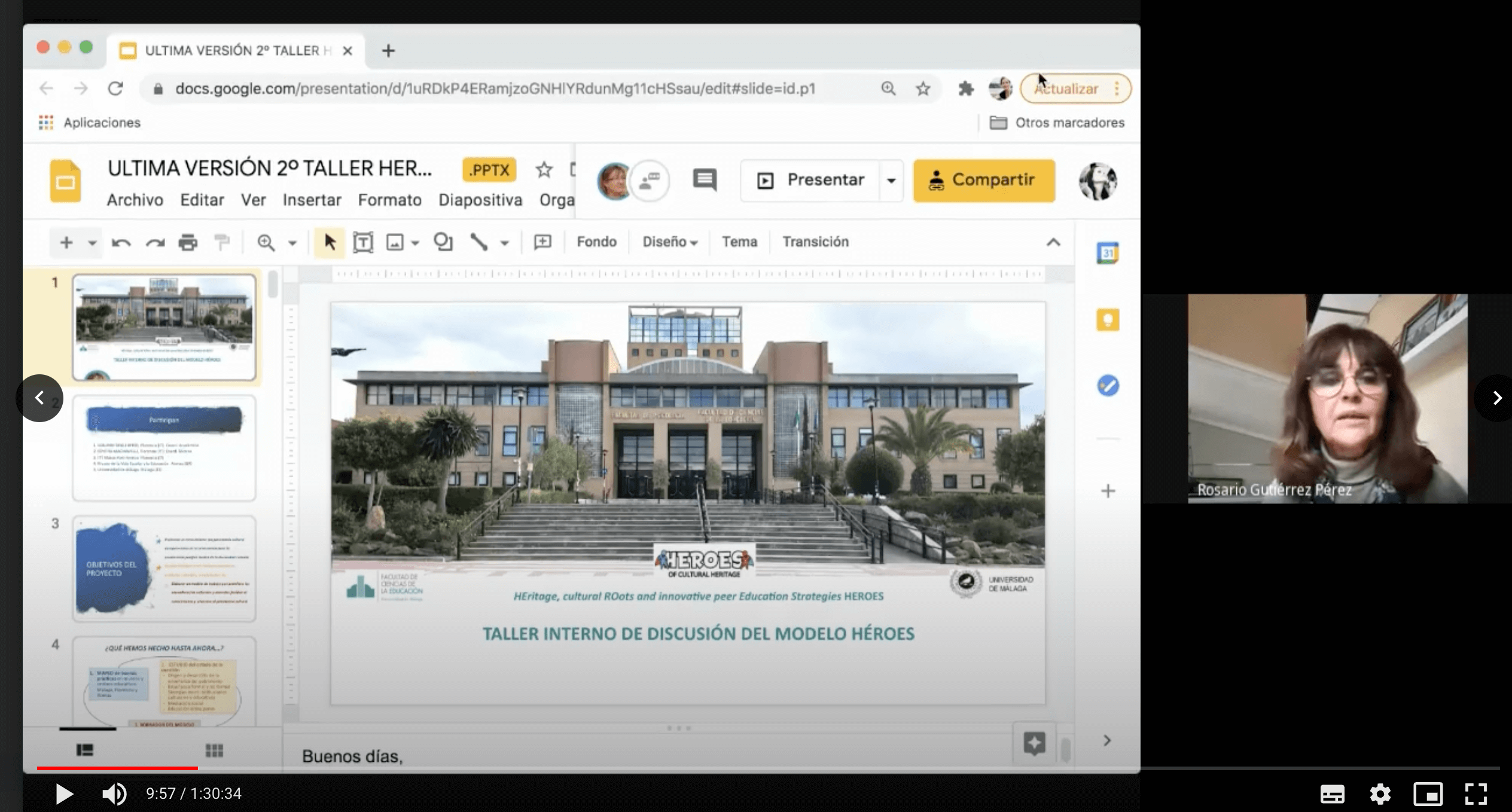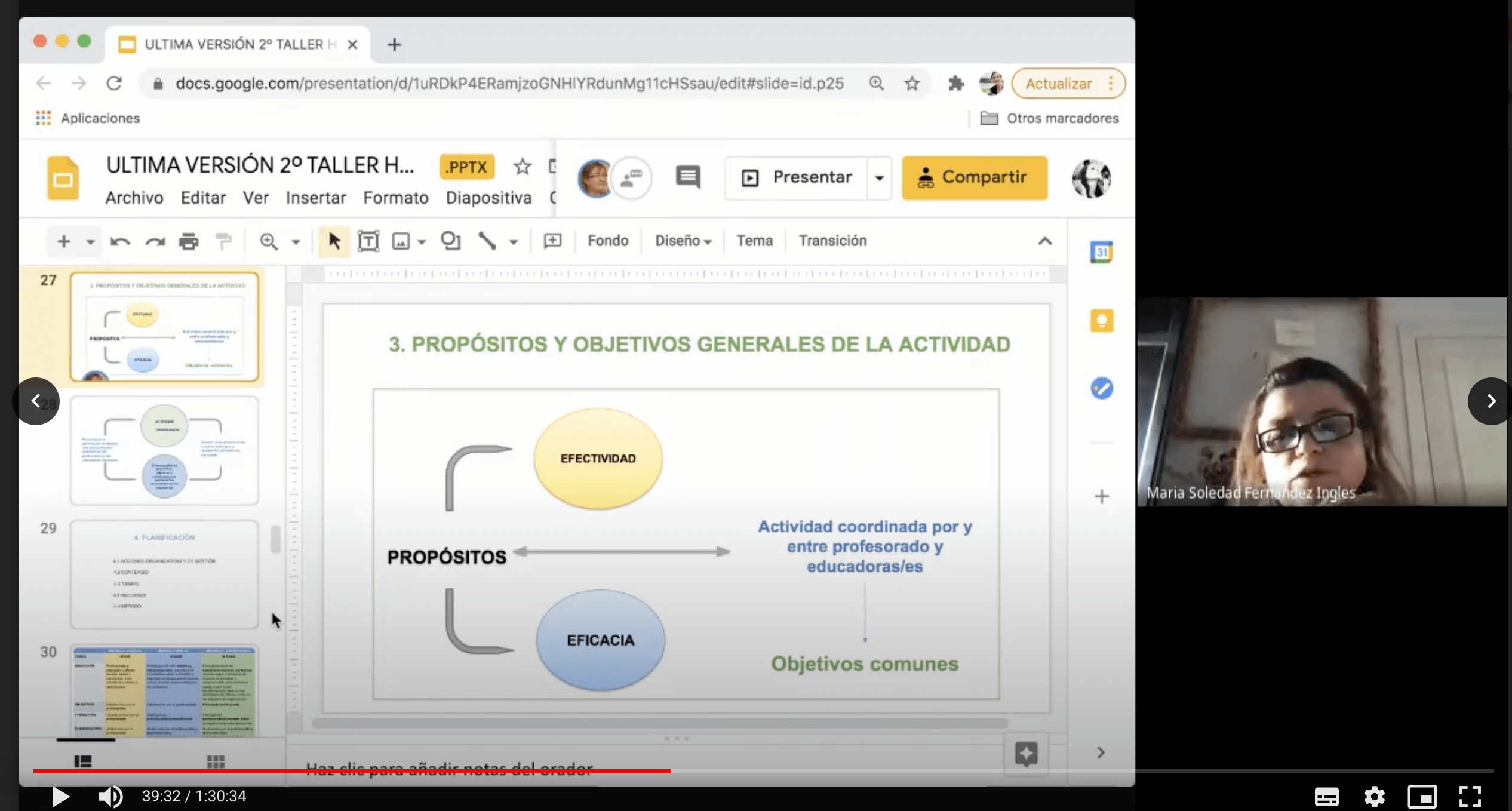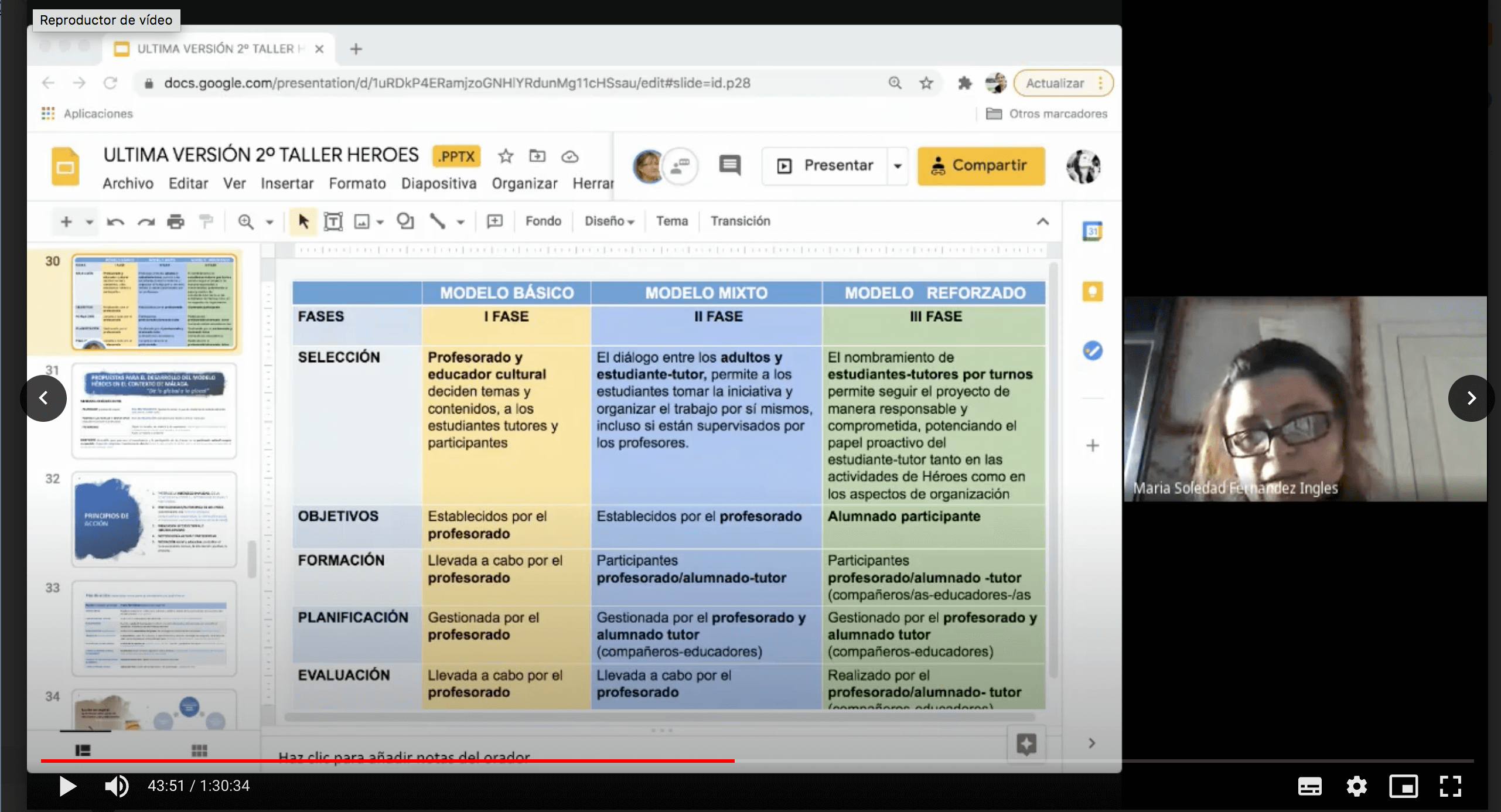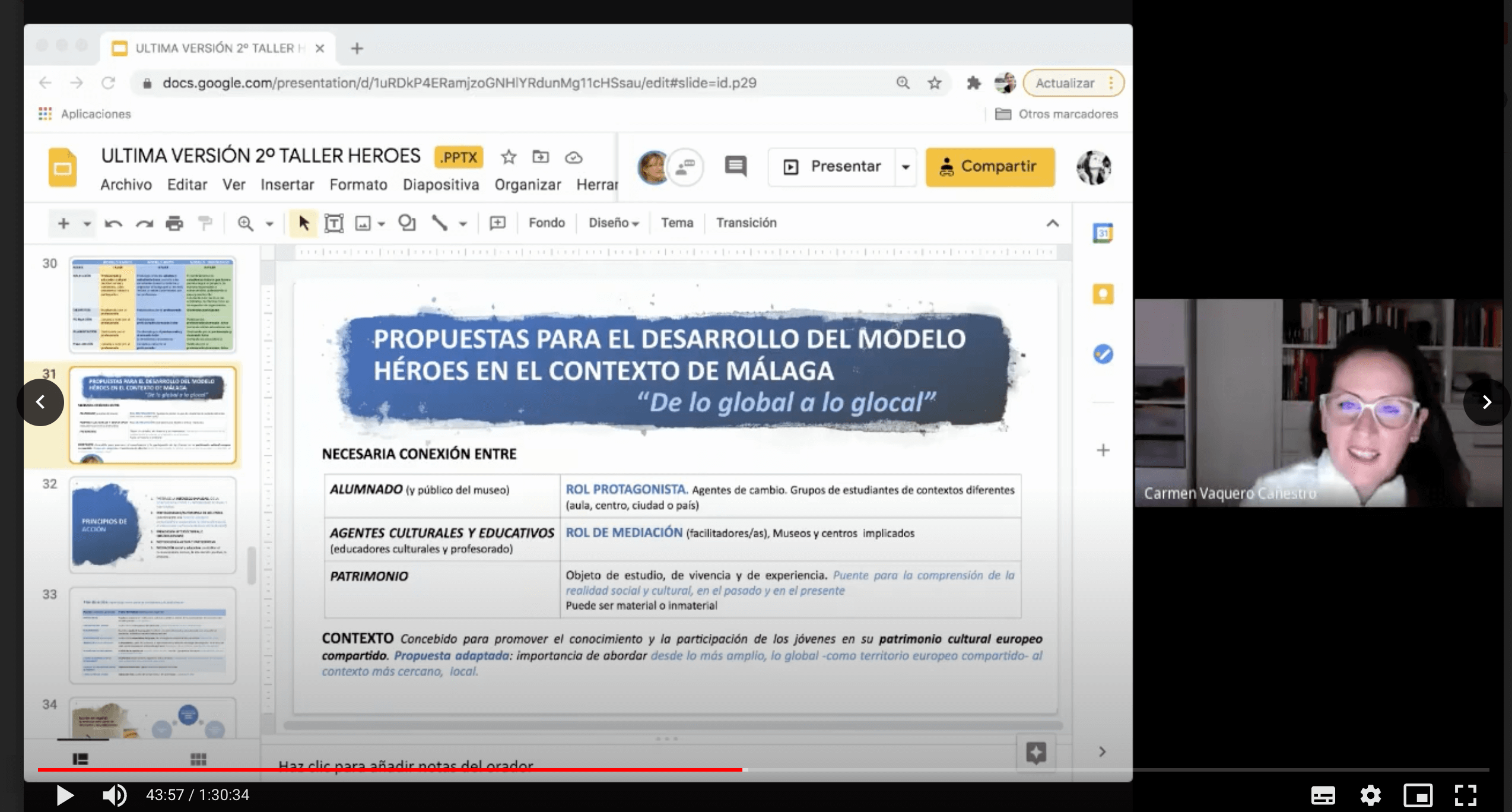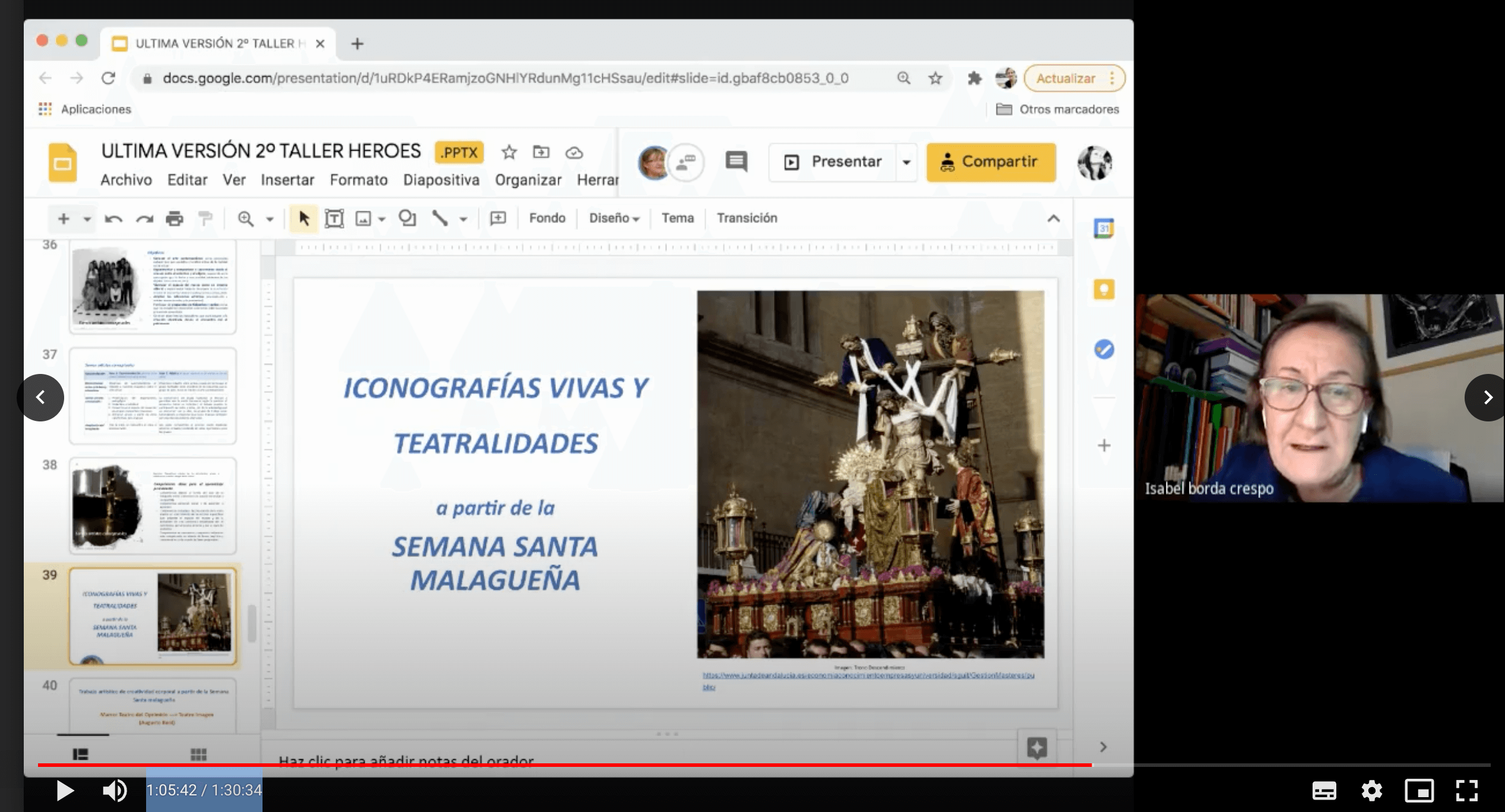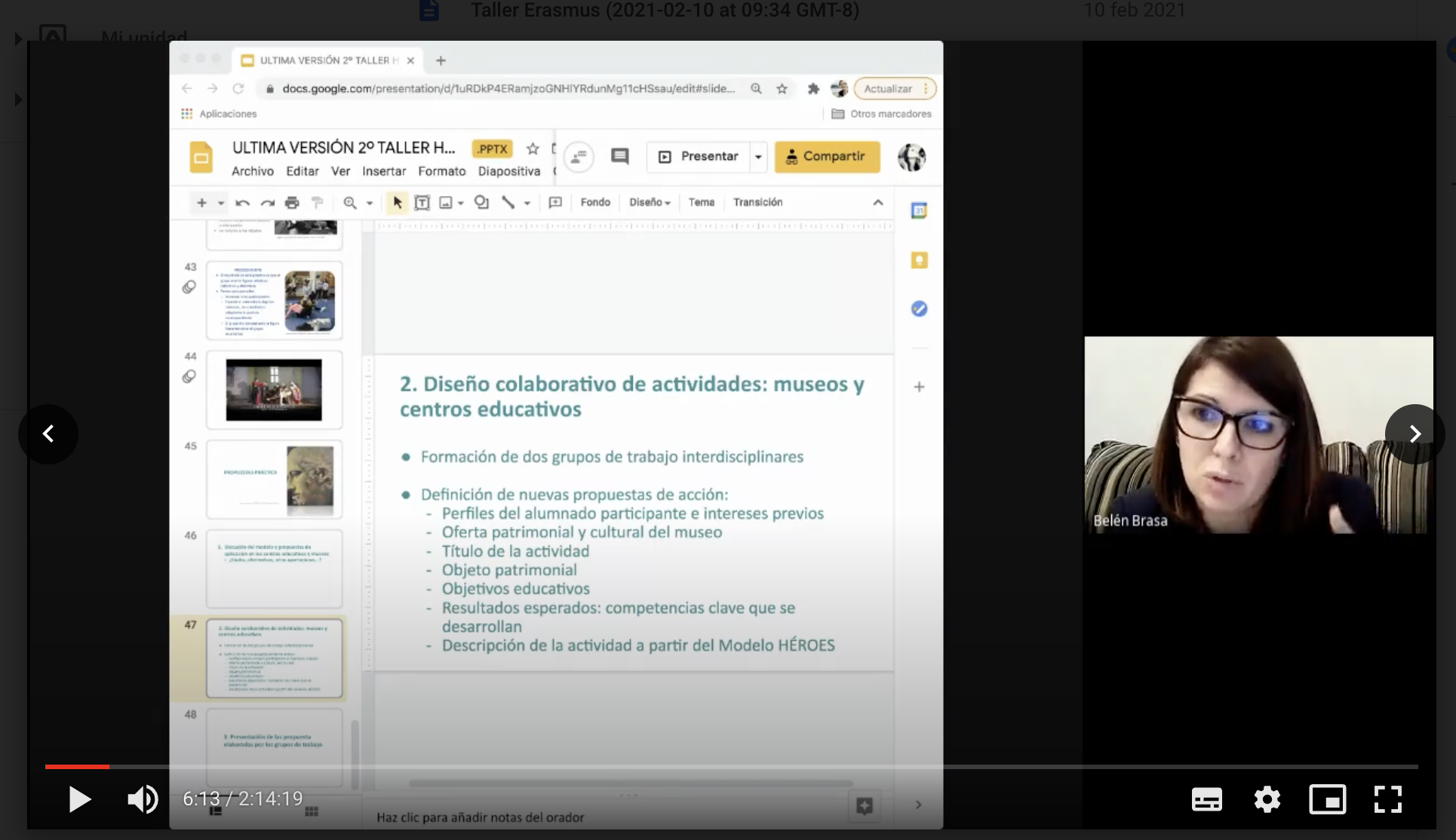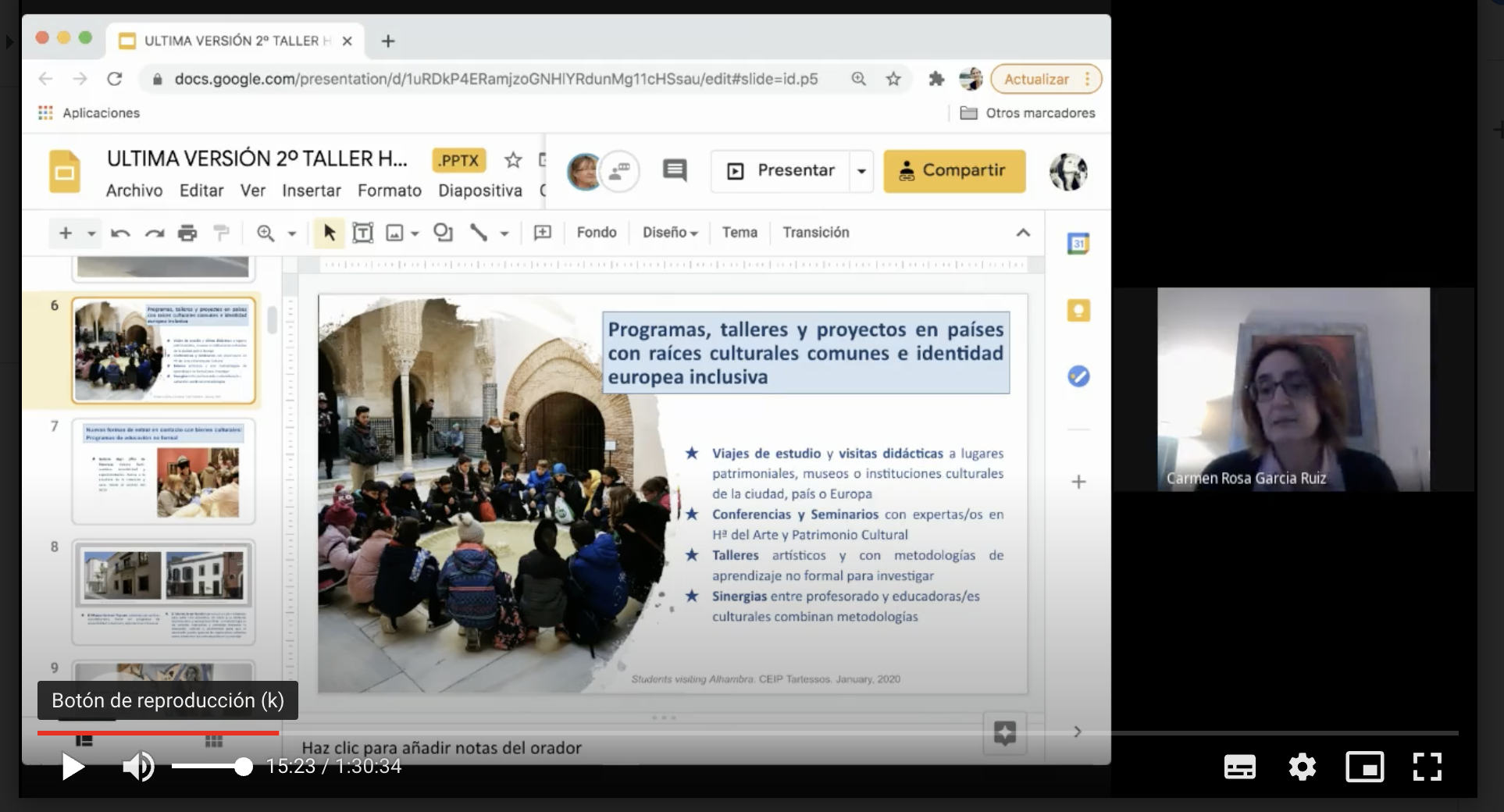Internal Workshop UMA, 10 February 2021
The workshop is developed in two sessions:
Theoretical session, aimed at exposing and discussing the draft model. This refers to the results of mapping on good practices in heritage teaching in museums and schools (1st workshop), the analysis of the status of the issue relating to heritage teaching and peer methodology, and methodological proposals to develop HEROES model.
Practical session, in which the assistants - two educators of the Thyssen Museum and the Jorge Rando Museum, seven teachers of Secondary Education and Baccalaureate, and the five professors who develop the project 'HEROES' at the University of Malaga - participate in the design of an activity sensitive to peer learning, following the following scheme:
Profiles of participating students and previous interests
Profile: Group: students from 16 to 18 years old, who usually show no interest in artistic heritage and who do not access museums autonomously. Therefore, its approach to the museum is subject to family or school accompaniment.
Previous interests: The proposal provides for an initial discussion with the members of the group to ask them:
- what they would like to learn in the museum context
- what they want to teach their peer group
- and from what works they want to work on.
Once these premises have been defined, the subsequent and joint intervention of teachers and museum educators will be considered, to facilitate the training of students and the activity they will carry out with their peers.
Heritage and cultural offer of the museum
Considering that heritage speaks of our culture and identity and that artistic language allows us to get to know each other, the Thyssen Museum offers workshops adapted to different levels of interest, in which the artistic production of students is promoted from the works that can be seen in the halls. In the same line works the Jorge RandoMuseum, connecting in its workshops the curricular contents with in the plastic works that give it content.
Activity title
Since the session does not have students, attendees shuffle different formats of activity between pairs, among which stands out the idea of using performative/creative activity, musical expression to communicate the heritage contents and thus promote the interest of the group. That's where the term"Raptrimonium" comes from.
Heritage object
Since the session does not have students, nor do the heritage objects that will be the reason for the intervention be realized. Your choice will depend on the interests of the group and the concept it decides to address with the activity. In this sense, possible ideas are shuffled such as: beauty or ugliness, love, war, sustainability, etc.
Teaching and learning objectives
At the artistic and heritage level, the objectives will be in tune with the heritage objects that contain the activity.
Likewise, the educational objectives will have to do with the cross-cutting topic that the group raises for the development of its activity.
Expected results: key competencies that develop
It is envisaged that the activity will be performative and creative, which will therefore have an expressive character, that it will have basic elements such as debate and dialogue and that it will be generating a new cultural and aesthetic experience.
Therefore, the group will have the possibility to develop the specific skills linked to the different talents of the participating students, language skills, digital skills, ability to learn to learn, social and civic competence, sense of initiative and entrepreneurial spirit and, of course, awareness and cultural expressions.
Description of the activity from the HEROES Model
Although the activity does not material because the central idea is that the group of students who will develop it does, the workshop attendees propose that it will have the following elements:
- Interdisciplinarity character: music, dramatization, plastic expression, history, art history, literature, etc.
- Prominence of the interests of students: initial questions that highlight the interests of the group around art, with the aim of connecting the teaching of heritage with its concerns and artistic, musical and plastic afitions (e.g. rap or graffiti).
- Learning model: dialogical, based on artistic and heritage experience.
- Methodology: dialogical talk.
- Resources: an estate object that responds to the interests of the group and the subject matter of their choice.





